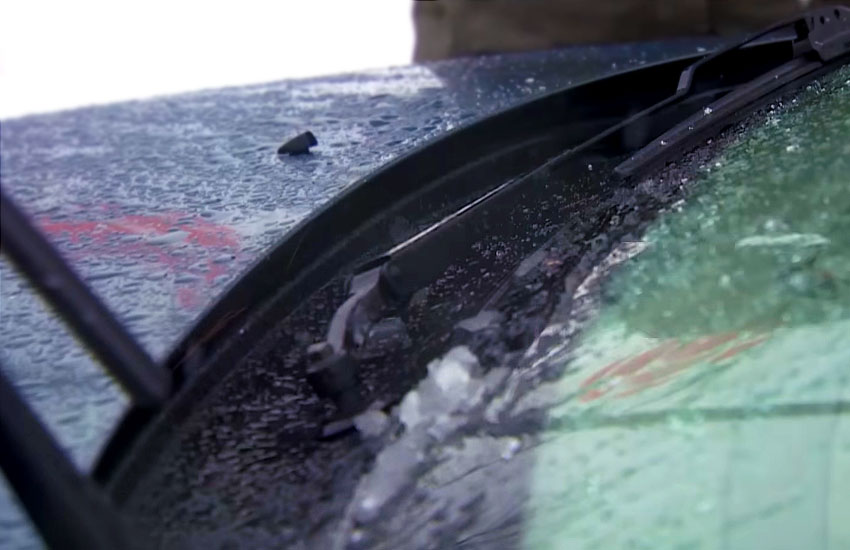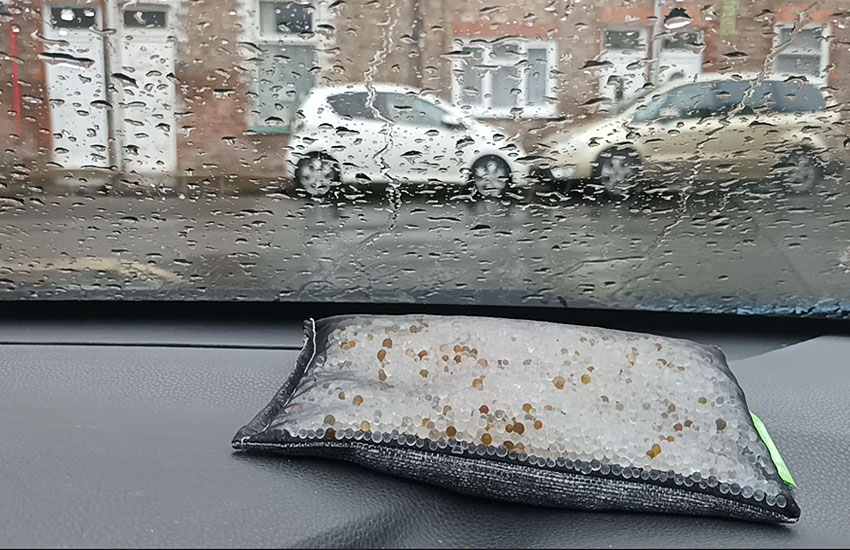In cold weather, it is common for car windshields to freeze on the inside, impeding visibility and making driving dangerous. If you want to stop the car windscreen from freezing inside, park your car in a garage or use a windscreen cover.
However, there are simple steps you can take to prevent this issue. One effective solution is to park your car in a garage or covered area, as it protects you from extreme temperatures. Additionally, using a windscreen cover can help insulate the interior and prevent frost buildup.
By implementing these measures, you can ensure a clear and safe driving experience, even during cold winter months.

Understanding The Problem
Protect your car windscreen from freezing inside with these effective tips. Avoid the hassle of scraping ice or waiting for defrosting by understanding the underlying causes and taking preventive measures.
Why Car Windscreen Freezes From Inside
Understanding why a car windscreen freezes from the inside is crucial for finding effective solutions. One common reason is the presence of excessive moisture inside the vehicle. When the air inside the car contains high levels of humidity, it creates a favourable environment for condensation to form on the windscreen, especially during colder temperatures. This condensation then freezes, leading to a frozen windscreen. Factors such as rain, snow, wet clothes, or even breath moisture can contribute to the increased humidity levels inside the car.
Consequences Of A Frozen Car Windscreen
Dealing with a frozen car windscreen can be both inconvenient and potentially dangerous. Here are the consequences of having a frozen windscreen:
- Reduced visibility: A frozen windscreen significantly hampers your ability to see clearly, making it challenging to drive safely. This compromised visibility poses a risk to both you and other road users.
- Time-consuming and frustrating: Tackling a frozen windscreen can eat up valuable time as you wait for it to defrost naturally or manually defrost it with various tools and techniques. Additionally, the process can be frustrating, especially during rushed mornings or cold climates.
- Potential damage: Repeatedly exposing your windscreen to extreme temperature changes can lead to cracks or chips. The expansion and contraction caused by freezing and thawing weaken the glass, increasing its susceptibility to damage.
Now that we understand why car windscreen freezes from the inside and the consequences it can bring, let’s explore some effective strategies to prevent and stop this issue.
Preventive Measures
Prevent car windscreen freezing inside with these helpful preventive measures. Keep your car parked in a well-insulated garage, use windshield covers during winter nights, run the defrost setting before driving, and open windows slightly to reduce moisture buildup.
Parking Strategies To Prevent Windscreen Freezing
Preventing your car windscreen from freezing on the inside can save you time and effort in the mornings. When the temperature drops, condensation can form on the inside surface of the windscreen which can freeze overnight, making it difficult to see clearly when you’re ready to drive. However, by implementing a few preventive measures, you can keep your windscreen clear and avoid this inconvenience. Here are some parking strategies that can help:
- Park in a garage or carport: Parking your car in a garage or carport can help protect it from extreme cold temperature variations, preventing the windscreen from freezing on the inside.
- Park under a cover: If you don’t have access to a garage, consider using a car cover or tarp to shield your car from the cold. This can help reduce condensation and prevent the windscreen from freezing.
- Park facing away from the wind: Positioning your car so that it faces away from the direction of the prevailing winds can minimize the amount of moisture that reaches your windscreen, reducing the chances of freezing.
Using Protective Covers Or Windshield Blankets
In addition to parking strategies, using protective covers or windshield blankets can further prevent the windscreen from freezing on the inside. These covers act as a barrier, preventing moisture from accumulating on the glass surface and reducing the likelihood of frost formation. When using protective covers or windshield blankets, remember to:
- Ensure a snug fit: Select a cover or blanket that fits your windscreen properly, ensuring no gaps or loose areas where moisture can seep in.
- Secure the cover or blanket: Fasten the cover or blanket securely to prevent it from shifting or blowing off during windy nights. This will maintain its effectiveness in preventing windscreen freezing.
- Remove in the morning: Before driving, remove the cover or blanket carefully to avoid any excessive moisture or frost from falling back onto the windscreen.
Using Anti-fogging Sprays Or Solutions
Another effective preventive measure is the use of anti-fogging sprays or solutions on the interior surface of the windscreen. These products create a thin film that helps to reduce condensation and fogging, keeping your windscreen clear even in cold weather. When using anti-fogging sprays or solutions:
- Clean the windscreen: Before applying the spray or solution, ensure that the windscreen is clean and free from any dirt or debris. This will allow the product to adhere properly and provide maximum effectiveness.
- Follow the instructions: Read and follow the manufacturer’s instructions carefully when applying the anti-fogging spray or solution. Apply it evenly across the entire interior surface of the windscreen.
- Reapply as needed: Depending on the product, the effectiveness of the anti-fogging spray or solution may diminish over time. Reapply as directed by the manufacturer to maintain optimal performance.
Quick Hacks To Unfreeze Car Windscreen
Dealing with a frozen windscreen can be a major hassle, especially during those bitterly cold winter mornings. Fortunately, there are several quick hacks you can try to unfreeze your car windscreen and get on with your day. In this article, we’ll explore three effective methods to help you defrost your windscreen quickly and easily.

Using A De-icer Spray
One of the easiest and most convenient ways to unfreeze your car windscreen is by using a de-icer spray. These sprays contain a solution specifically designed to melt ice and frost, making it a great choice for quick defrosting. To use a de-icer spray, follow these simple steps:
- Purchase a quality de-icer spray from a local auto supply store.
- Remove any loose snow or ice on the windscreen using a brush or scraper.
- Shake the de-icer spray thoroughly to ensure the solution is well-mixed.
- Spray the de-icer solution evenly onto the windscreen, focusing on the areas with the most ice or frost.
- Wait for a few minutes to allow the de-icer to work its magic.
- Use a scraper or brush to gently remove any remaining ice or frost.
Using a de-icer spray is a quick and efficient method to defrost your car windscreen, saving you precious time on those cold winter mornings when every minute counts.
Using A Saltwater Solution
If you don’t have a de-icer spray on hand, another effective hack to unfreeze your car windscreen is by using a saltwater solution. Salt lowers the freezing point of water, which helps to melt the ice on your windscreen. Follow these steps to use a saltwater solution:
- Dissolve approximately two tablespoons of table salt in a spray bottle filled with warm water.
- Shake the bottle to ensure the salt is fully dissolved.
- Spray the saltwater solution onto the frozen areas of the windscreen.
- Wait for a few minutes to allow the saltwater solution to work its magic.
- Use a scraper or brush to gently remove the melted ice.
Using a saltwater solution is a cost-effective alternative to de-icer spray, as most households already have salt readily available. This method can help you quickly defrost your windscreen without any hassle.
Creating Airflow In The Car
Another effective hack to defrost your car windscreen is by creating airflow within the vehicle. Here’s how you can do it:
- Start your car’s engine and let it warm up.
- Switch on the fans for the car’s heating system.
- Adjust the settings to direct the airflow towards the windscreen.
- Leave the fans running for a few minutes, allowing the warm air to circulate.
- As the warm air blows onto the windscreen, the ice or frost will gradually melt away.
Creating airflow inside your car is an effective way to defrost your windscreen, especially if you don’t have any de-icer spray or salt on hand. It’s a simple and hassle-free method that can save you time and effort.
With these quick hacks, you can easily unfreeze your car windscreen and get on the road without any delays. Whether you choose to use a de-icer spray, a saltwater solution, or create airflow in your car, these methods will ensure a frost-free windscreen even during the coldest winter mornings.

Credit: www.cbc.ca
Final Words
Preventing car windscreen from freezing inside is essential for smooth and safe driving in colder temperatures. By using effective strategies such as parking in covered areas, using a windscreen cover, or using a dehumidifier, you can minimize the risk of frost build-up and ensure clear visibility.
Taking these proactive measures will not only save time and effort in the morning but also enhance your overall driving experience during winter. So, equip yourself with these handy tips and bid farewell to frozen windscreens!
